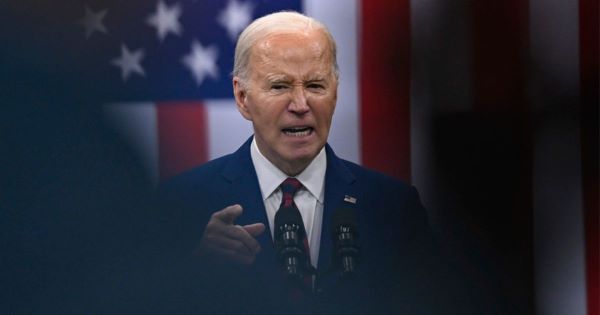
A federal judge has ruled that the Biden administration was driving way out of its lane in adopting a 2023 rule that forced states to measure greenhouse gas emissions.
The ruling from U.S. District Court Judge James Wesley Hendrix, who was appointed by former President Donald Trump, kills off a rule that wanted states to measure emissions from vehicles using the U.S. highway system and establish targets for declining carbon dioxide emissions, according to Fox News.
“A federal administrative agency cannot act without congressional authorization,” Hendrix wrote in his ruling, adding, “the Court concludes that the rule was unauthorized.”
Hendrix stayed the implementation of his ruling to allow the Biden administration to appeal.
This rule was issued in December by the Federal Highway Administration, which is part of the Department of Transportation, according to Reuters.
Transportation Secretary Pete Buttigieg said the rule would “provide states with a clear and consistent framework to track carbon pollution and the flexibility to set their own climate targets.”
Texas Attorney General Ken Paxton called the rule “unlawful climate mandates.”
A separate group of 21 states sued in December in Kentucky, also challenging the regulation. That lawsuit is still pending.
According to KIAH-TV, the rule was part of the Biden administration’s effort to hit “net zero emissions” by 2050.
In the ruling, Hendrix said wiping out the rule was an extreme step, but one with few consequences because the first report date under the rule was March 29.
He said that regardless of the intentions of the rule, the Biden administration went about it all wrong.
“If the people, through Congress, believe that the states should spend the time and money necessary to measure and report GHG emissions and set declining emission targets, they may do so by amending Section 150 or passing a new law,” he wrote, referring to the section of law amended by the Biden administration.
“But an agency cannot make this decision for the people,” he wrote.
“An agency can only do what the people authorize it to do, and the plain language of Section 150(c)(3) and its related statutory provisions demonstrate the DOT was not authorized to enact the 2023 Rule,” he wrote.
Hendrix wrote that in developing rules for highway aid to the states “Congress specifically excluded other environmental purposes.”
“Importantly, none of the provisions touch a subject even remotely related to CO2 emissions by vehicles on the Interstate System or National Highway System. They are each more limited in scope to particular aspects of environmental impacts of the interstate and national-highway systems,” he wrote.
“The specific inclusion of these authorized environmental purposes — and the omission of anything related to GHG emissions — further weigh against adopting the DOT’s broad interpretation of ‘performance,’” he wrote.
“[T]the statutory context consistently instructs the Court to reject the DOT’s expansive interpretation. Thus, the Court concludes that the DOT’s GHG emission measure is unauthorized by the statute,” he wrote, using an acronym for greenhouse gases.
